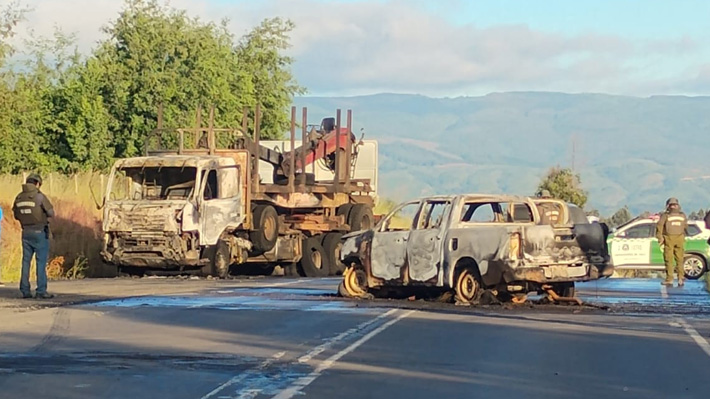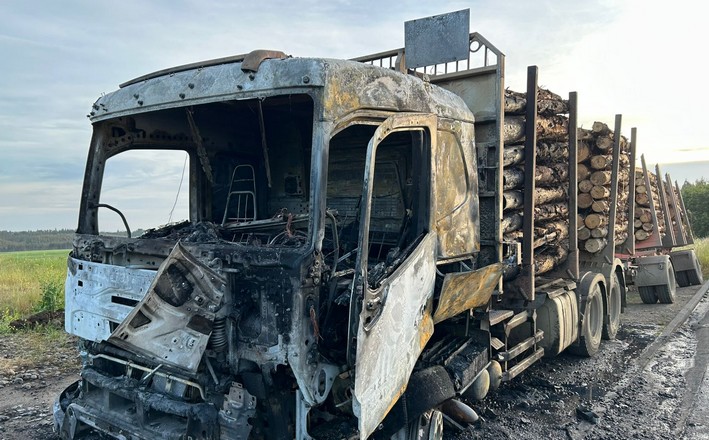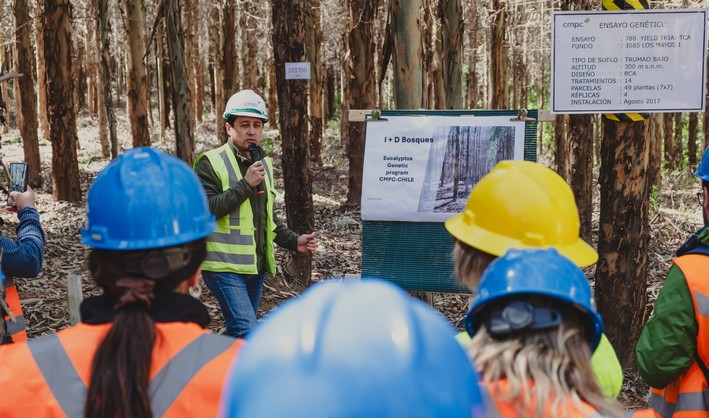Chile Under Fire: Study Reveals 48% of February Wildfires Were Intentional
The first days of February were marked by wildfires in the southern part of the country. The nation came to a halt, and the government mobilized all its forces to combat the catastrophe.
However, three months have passed since the fires began on February 1, and neither the Executive branch nor CONAF (National Forestry Corporation) has released the figures or investigations related to the incident.
For this reason, the urban planning office Atisba analyzed what happened in southern Chile using official data from CONAF, obtained from the Digital Information and Disaster Control System (SIDCO) platform. The analysis—worked on for nearly three months—reveals the high percentage of fires that were intentionally set.
The report explains that "48% of the fires were intentionally started, and this percentage exceeds 60% in 25 communes." It also details the areas where intentionality is highest and notes that "there is a connection to terrorism in the Southern Macrozone, as the communes with the highest intentionality rates coincide with the most affected sectors."
Atisba's executive director, Iván Poduje, explained to Radio Bío Bío that "we began to notice that the fires were occurring in sectors where we had previously recorded attacks" and that "we accessed CONAF's SIDCO with a key and downloaded all the databases."
The architect added that what they did was "enter the system and download all the information by commune. They categorize fires by origin: accidental, natural (which are very few), and intentional."
Based on this, they mapped out "intentional fires by commune and applied this percentage to the burned area, calculating the proportion of land destroyed by intentional fires."
Thanks to this, they found that "25 communes have over 60% intentionality, many of which have prior attacks in the Southern Macrozone. We also detected attacks that were extinguished in time in San Pedro de la Paz and Coronel."
THE FIRST THREE DAYS
According to the 56-page report, this year's fires are the second-largest disaster recorded by CONAF. The 2017 fires rank first, but the simultaneity was greater in 2023, which could be explained by intentionality.
"Intentionality also explains the number of simultaneous fires. Between February 1 and 3, 22 fires burned 223,210 hectares, equivalent to 68% of the total. In 2017, only 4% burned in the first three days."
There were 222 fires in those three days, with eight classified as "mega-fires" exceeding 10,000 hectares—far the most destructive.
FIRST OUTBREAKS
Regarding the first outbreak in Chillán, "no intentional fires were reported, so we can conclude the origin was accidental or due to negligence, exacerbated by climatic factors."
Atisba's analysis states, "The problem is that this contingency seems to have been exploited to start fires in other sectors with high intentionality." They cite the fire in Coelemu, a commune with "a 75% intentionality rate, located 55 kilometers from Chillán, ruling out any possibility of spread by embers." The fire also started when "the emergency in Ñuble's capital had been ongoing for two hours with heavy media coverage."
SIMULTANEITY
Another point analyzed was simultaneous fire outbreaks. "On February 2, the fires grew significantly, burning 100,000 hectares compared to 8,750 destroyed the first day."
The report explains that by 3:00 PM on February 2, the severity was clear, but the outbreaks were identified: Chillán, Tomé, and Concepción. However, "this situation changed at night, with the fire shifting toward communes affected by terrorism in the Southern Macrozone." The fire "changed scale, advancing 170 kilometers south through multiple outbreaks ignited on the afternoon of February 2, 2023."
Later, two fires appeared in "the heart of the Southern Macrozone's red zone. At 10:26 PM, fire #816 'Las Acacias' began in Mulchén, a commune with 68% intentionality. Forty minutes later, fire #637 'La Liebre' started in Lumaco, with 48% intentionality."
The report continues with events at 4:45 PM on Thursday, February 2, when "the most tragic incident of this disaster occurred. In grasslands near rural road Q-294, fire #801 Santa Ana began—the largest and most destructive."
INTENTIONALITY
The report's final conclusion is that if climatic conditions repeat and "an accident triggers another chain of fires, the same groups that burned fields to destroy or terrorize the population could exploit the situation."
Poduje explained it this way: "We concluded that first, there was a shift of the conflict southward and toward Concepción." But he clarifies this is "a hypothesis—we lack certainty, but it’s grounded because in the 2017 fires, intentionality increased from north to south, and Concepción had a high percentage. So intentional fires were already near Concepción."
He added, "Our theory—just a hypothesis—is that when the Chillán fire (likely accidental) occurred, it spurred intentional fires. There was intent to burn forests in Arauco Province—the fire that affected Santa Ana, Santa Juana, etc. An attempt to shift the conflict by exploiting fire."
All this is based on data in the report, showing variations by commune. "The 48% intentionality average rises to 51% in Bío Bío Region and 55% in Araucanía, dropping to 10% and 18% in Maule and Los Ríos. This pattern—directly tied to burned area (higher intentionality = more destruction)—stems from the fire's shift from Chillán to the Southern Macrozone, where a 'fire culture' exists due to arson attacks."
It’s emphasized that of the 25 communes with over 60% intentionality, "71% have terrorist attacks linked to the Southern Macrozone conflict."
When asked about the 29% without terrorist attacks, Poduje said, "I think the Chillán incident activated simultaneous outbreaks in different areas, creating a context like the 'estallido' (social uprising), ripe for further attacks."
An example is fires around Greater Concepción, which "do not overlap with communes most affected by terrorism (which extends to Arauco Province). However, intentionality isn’t new in Bío Bío’s capital—the same happened in the 2017 mega-fire. Compared to 2017, intentionality increased in 2023 in Florida, Hualqui (surrounding Greater Concepción), and Los Ángeles (rising from 35% in 2017 to 61% in 2022)."
GOVERNMENT ACTION
"It’s hard to understand why the Chilean State hasn’t published or explained the high intentionality rates or announced measures to protect fire-exposed cities," states the report.
Similarly, Poduje isn’t surprised by the State and CONAF’s inaction, as the figures "are alarming. At the time, Minister Tohá spoke of 25% intentionality. Now we’re talking about 900,000 people living in communes with 60% intentionality."
Source:www.biobiochile.cl

















